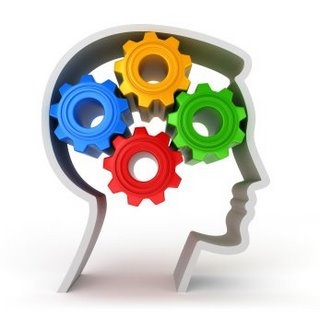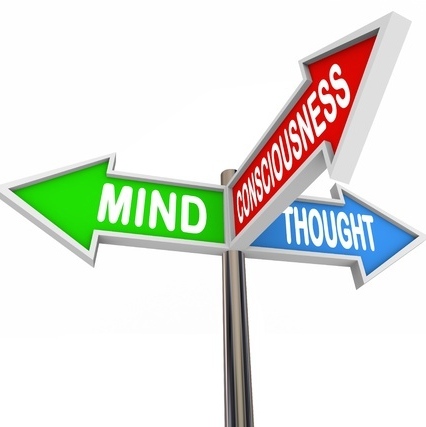The Tools of Hypnotherapy
Hypnotherapy is the use of hypnosis for therapeutic purposes.
In my practice of hypnotherapy, I have several tools at my disposal: Ericksonian, New and Humanist Hypnosis, Neurolinguistic Programming, Advanced Symbolic Therapy, and Self Hypnosis. You can read more about these tools below.
Each session is personalized and in any given session, I may use one or a combination of approaches to help you achieve your therapeutic objectives.
At all times, you can be assured of technical competence, professionalism, integrity, confidentiality, and of course, boundless optimism. There are so many ways to make changes and improve your life!
Techniques
Ericksonian and New Hypnosis
 Milton H. EricksonThe father of modern hypnosis, Dr. Milton H. Erickson (1901-1980) is credited with resurrecting hypnosis from the music-halls of his day and transforming it into effective treatment for many medical and psychological problems, so much so that he was nicknamed, “The Wizard”. The ensemble of his techniques, such as his conversational approach, his use of indirect suggestion, and his sense of humor, live on today under the appellation of “Ericksonian hypnosis”. His techniques were modeled, updated and expanded later on in the New Hypnosis movement.
Milton H. EricksonThe father of modern hypnosis, Dr. Milton H. Erickson (1901-1980) is credited with resurrecting hypnosis from the music-halls of his day and transforming it into effective treatment for many medical and psychological problems, so much so that he was nicknamed, “The Wizard”. The ensemble of his techniques, such as his conversational approach, his use of indirect suggestion, and his sense of humor, live on today under the appellation of “Ericksonian hypnosis”. His techniques were modeled, updated and expanded later on in the New Hypnosis movement.
Ericksonian and New Hypnosis both offer a basic understanding for the unconscious mind as well as highly effective tools for what can be described as “structural” or “mechanical” problems. Examples include allergies, phobias, stress related to a specific situation, pain, compulsions (overeating, cigarettes, nail-biting, bedwetting, cigarette smoking), sexual problems, repetitive behaviors, etc. For these types of problems, the therapeutic intervention is targeted at informing the unconscious mind of the maladaptive behavior and inciting it (through the use of indirect suggestion) to its innate creativity to generate new and better ways of dealing with the situation.
Neurolinguistic Programming
 In the 1970’s, Richard Bandler, a mathematician, and John Grinder, a linguist, set out to study and model the communication methods of the most successful therapists at that time: Virginia Satir, Fritz Perls and Milton Erickson. Their models gave way to the identification and further modeling of the 3 main components of the human experience: language (both verbal and nonverbal), neurology (how we are wired) and programming (our unique perception of the world as acquired through society, family, education, experience etc). With their powers of observation, creativity and remarkable analytical skills, Bandler and Grinder sought to develop newer, better and faster ways of helping people overcome their problems. Not merely a therapeutic tool, NLP is also widely used in sales, marketing and communications.
In the 1970’s, Richard Bandler, a mathematician, and John Grinder, a linguist, set out to study and model the communication methods of the most successful therapists at that time: Virginia Satir, Fritz Perls and Milton Erickson. Their models gave way to the identification and further modeling of the 3 main components of the human experience: language (both verbal and nonverbal), neurology (how we are wired) and programming (our unique perception of the world as acquired through society, family, education, experience etc). With their powers of observation, creativity and remarkable analytical skills, Bandler and Grinder sought to develop newer, better and faster ways of helping people overcome their problems. Not merely a therapeutic tool, NLP is also widely used in sales, marketing and communications.
To this day, the NLP techniques that they and others (such as Robert Dilts) developed are considered the gold standard in the treatment of phobias, allergies, compulsions, repetitive behaviors, performance improvement and much more. Not only do NLP techniques treat the more “structural” problems as seen in Ericksonian and New Hypnosis, but later techniques expanded to encompass personal development, existential issues, and the symbolic treatment of problems later seen in Humanist Hypnosis.
Humanist Hypnosis
 Hypnosis was developed by Olivier Lockert, a Paris hypnotherapist, as a mix of curiosity and frustration. Ericksonian and New hypnosis, while both highly effective for fixing behavioral problems, were unable to address the existential and identity issues brought to him by many patients. Nothing was outwardly wrong or “broken” with these people, yet they simply did not feel they had the life they wanted.
Hypnosis was developed by Olivier Lockert, a Paris hypnotherapist, as a mix of curiosity and frustration. Ericksonian and New hypnosis, while both highly effective for fixing behavioral problems, were unable to address the existential and identity issues brought to him by many patients. Nothing was outwardly wrong or “broken” with these people, yet they simply did not feel they had the life they wanted.
At the same time, his natural curiosity about the possibilities of working in altered states of consciousness led him to ask a simple question. What would happen if he reversed the order of the hypnotherapeutic process? Ordinary hypnosis works by using special linguistic techniques to put a person into a sleeplike state, doing the therapy, and then waking them up. What if he started with the waking up part first? Thinking nothing special would happen, the results were as surprising as spectacular.
The special techniques of Humanist Hypnosis allows the therapist to lead a person into a state of greater consciousness and awareness, which Olivier calls an “extraordinary” state of consciousness. Found in certain types of meditation, this state allows the person to become more “awake” than usual. He or she can thus understand the “why” of his or her problem as well as participate actively in changing elements of his or her situation, which appear in symbols, such as those found in a dream. The person retains all the control with the therapist merely serving a guide. Changes can be spectacular and are immediate.
Humanist Hypnosis can be used to treat all types of problems, from the most mechanical to the most existential.
Advanced Symbolic Therapy
 Advanced Symbolic Therapy (TSA) is a therapeutic approach developed Patricia d’Angeli, a Jungian psychotherapist. Using the techniques of Humanist hypnosis, Advanced Symbolic Therapy provides simple yet highly effective tools for healing and transforming the deep inner wounds of our unconscious using the language of the unconscious: archetypes, symbols, analogies, and dreams. This approach is particularly adapted to Inner Child work, life passages (death, birth, abortion), balancing the inner feminine and masculine selves, and couples’ therapy. With TSA it is possible to achieve profound and lasting change within 4 to 10 sessions. See the Indications section for more specific applications.
Advanced Symbolic Therapy (TSA) is a therapeutic approach developed Patricia d’Angeli, a Jungian psychotherapist. Using the techniques of Humanist hypnosis, Advanced Symbolic Therapy provides simple yet highly effective tools for healing and transforming the deep inner wounds of our unconscious using the language of the unconscious: archetypes, symbols, analogies, and dreams. This approach is particularly adapted to Inner Child work, life passages (death, birth, abortion), balancing the inner feminine and masculine selves, and couples’ therapy. With TSA it is possible to achieve profound and lasting change within 4 to 10 sessions. See the Indications section for more specific applications.
Interpretation of Dreams
 Dreams are direct communications from our unconscious mind. Rich in meaning and symbols, they serve as a diagnostic and therapeutic guide. “Dreams have a superior intelligence in them, a wisdom and a guiding intelligence which lead us. They show us where we are wrong. They warn us about danger. And they convey to us illuminating insights.” Marie Louise Von Franz, Psychoanalyst and collaborator of Carl G. Jung.
Dreams are direct communications from our unconscious mind. Rich in meaning and symbols, they serve as a diagnostic and therapeutic guide. “Dreams have a superior intelligence in them, a wisdom and a guiding intelligence which lead us. They show us where we are wrong. They warn us about danger. And they convey to us illuminating insights.” Marie Louise Von Franz, Psychoanalyst and collaborator of Carl G. Jung.
Self Hypnosis
 It is my belief that the hallmark of successful hypnotherapy is autonomy, and one way to achieve this is through self hypnosis. As the Chinese proverb goes, “Give a man a fish, and you feed him for a day. Teach a man to fish, and you feed him for a lifetime.” Self hypnosis is a wonderful tool that can be used in between therapy sessions to reinforce the effects as well as post-therapy to help you work “hand-in-hand” with your unconscious for greater well-being and coping skills.
It is my belief that the hallmark of successful hypnotherapy is autonomy, and one way to achieve this is through self hypnosis. As the Chinese proverb goes, “Give a man a fish, and you feed him for a day. Teach a man to fish, and you feed him for a lifetime.” Self hypnosis is a wonderful tool that can be used in between therapy sessions to reinforce the effects as well as post-therapy to help you work “hand-in-hand” with your unconscious for greater well-being and coping skills.

Recent Comments